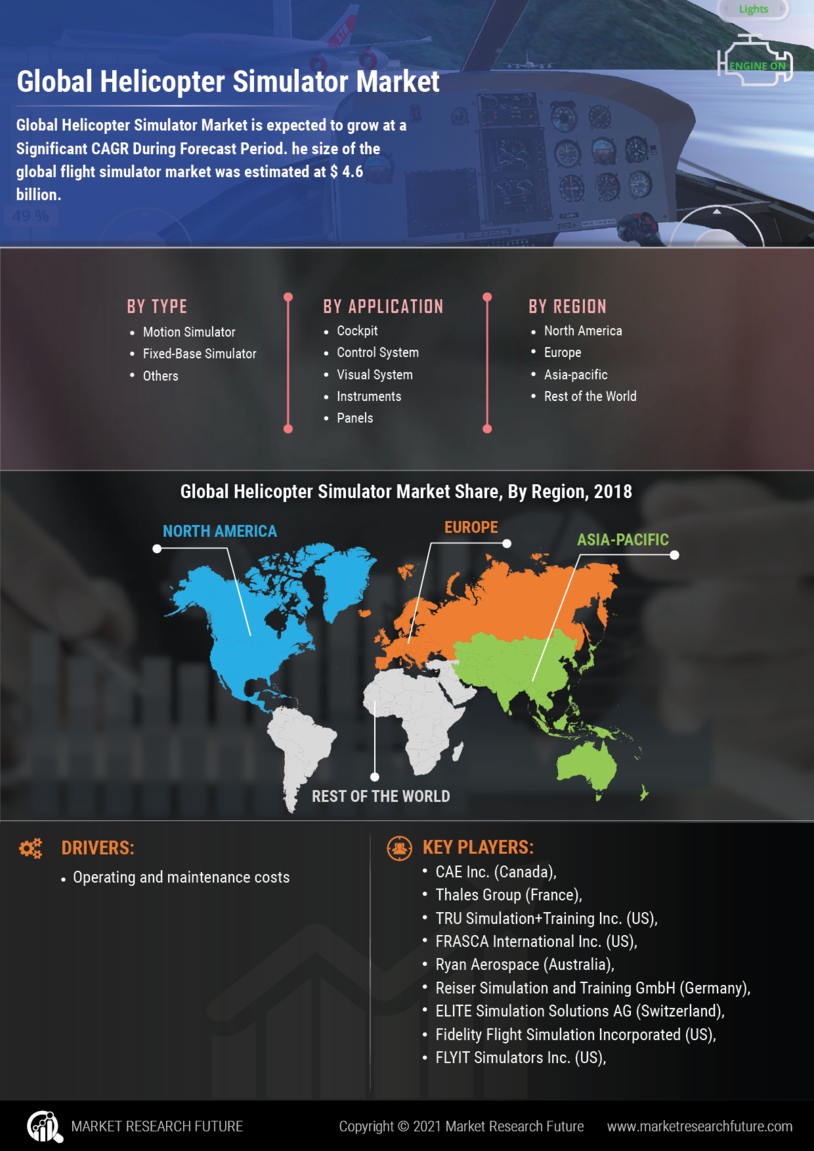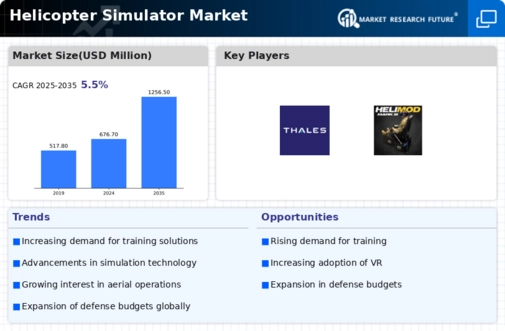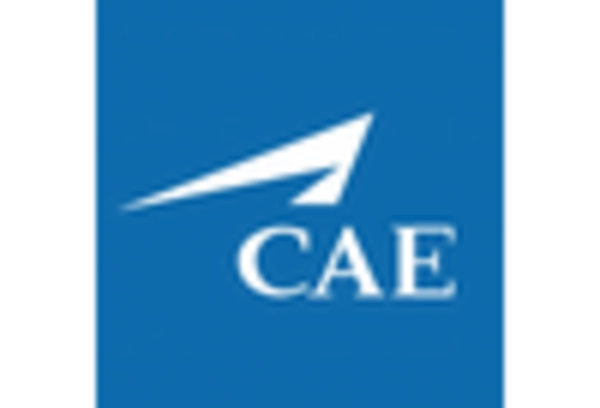North America : Market Leader in Simulation
North America continues to lead the helicopter simulator market, holding a significant share of 13.2% in 2024. The region's growth is driven by increasing defense budgets, technological advancements, and a rising demand for pilot training solutions. Regulatory support from agencies like the FAA enhances the market's expansion, ensuring compliance with safety and training standards. The focus on simulation technology is also fueled by the need for cost-effective training solutions in military and civilian sectors.
The competitive landscape in North America is robust, featuring key players such as Lockheed Martin, Boeing, and CAE Inc. These companies are at the forefront of innovation, developing advanced simulation technologies that cater to both military and commercial aviation sectors. The presence of established defense contractors and a strong emphasis on R&D further solidify North America's position as a leader in the helicopter simulator market.
Europe : Growing Demand for Training
Europe's helicopter simulator market is on the rise, with a market size of €7.8 million. The growth is attributed to increasing investments in aviation training and a focus on enhancing pilot skills. Regulatory bodies, such as the European Union Aviation Safety Agency (EASA), are promoting the use of simulators to meet stringent training requirements, thereby driving demand. The region's emphasis on safety and efficiency in aviation training is a key catalyst for market growth.
Leading countries in Europe include France, Germany, and the UK, where major players like Airbus and Thales Group are actively involved in developing cutting-edge simulation technologies. The competitive landscape is characterized by collaborations between manufacturers and training organizations, ensuring that the latest technologies are integrated into training programs. This synergy enhances the overall effectiveness of pilot training across the region.
Asia-Pacific : Emerging Market Potential
The Asia-Pacific helicopter simulator market is emerging, with a market size of $4.8 million. The region is witnessing a surge in demand for pilot training due to the rapid growth of the aviation sector and increasing air traffic. Governments are investing in aviation infrastructure and training facilities, which is expected to drive the adoption of simulators. Regulatory frameworks are evolving to support the integration of advanced training technologies, further propelling market growth.
Countries like China, India, and Japan are leading the charge in this market, with significant investments from local and international players. Companies such as CAE Inc. and L3Harris Technologies are expanding their presence in the region, focusing on tailored solutions for local training needs. The competitive landscape is becoming increasingly dynamic, with new entrants and partnerships enhancing the overall market potential.
Middle East and Africa : Developing Aviation Sector
The Middle East and Africa helicopter simulator market is in its nascent stages, with a market size of $0.6 million. The growth is primarily driven by the increasing demand for pilot training in the region's developing aviation sector. Governments are recognizing the importance of simulation technology in enhancing training efficiency and safety, leading to supportive regulatory measures. The focus on improving aviation infrastructure is also contributing to market expansion.
Key countries in this region include the UAE and South Africa, where investments in aviation training facilities are on the rise. The competitive landscape is characterized by a mix of local and international players, with companies exploring opportunities to establish training centers. As the aviation sector continues to grow, the demand for helicopter simulators is expected to increase significantly, paving the way for future developments.

















Leave a Comment